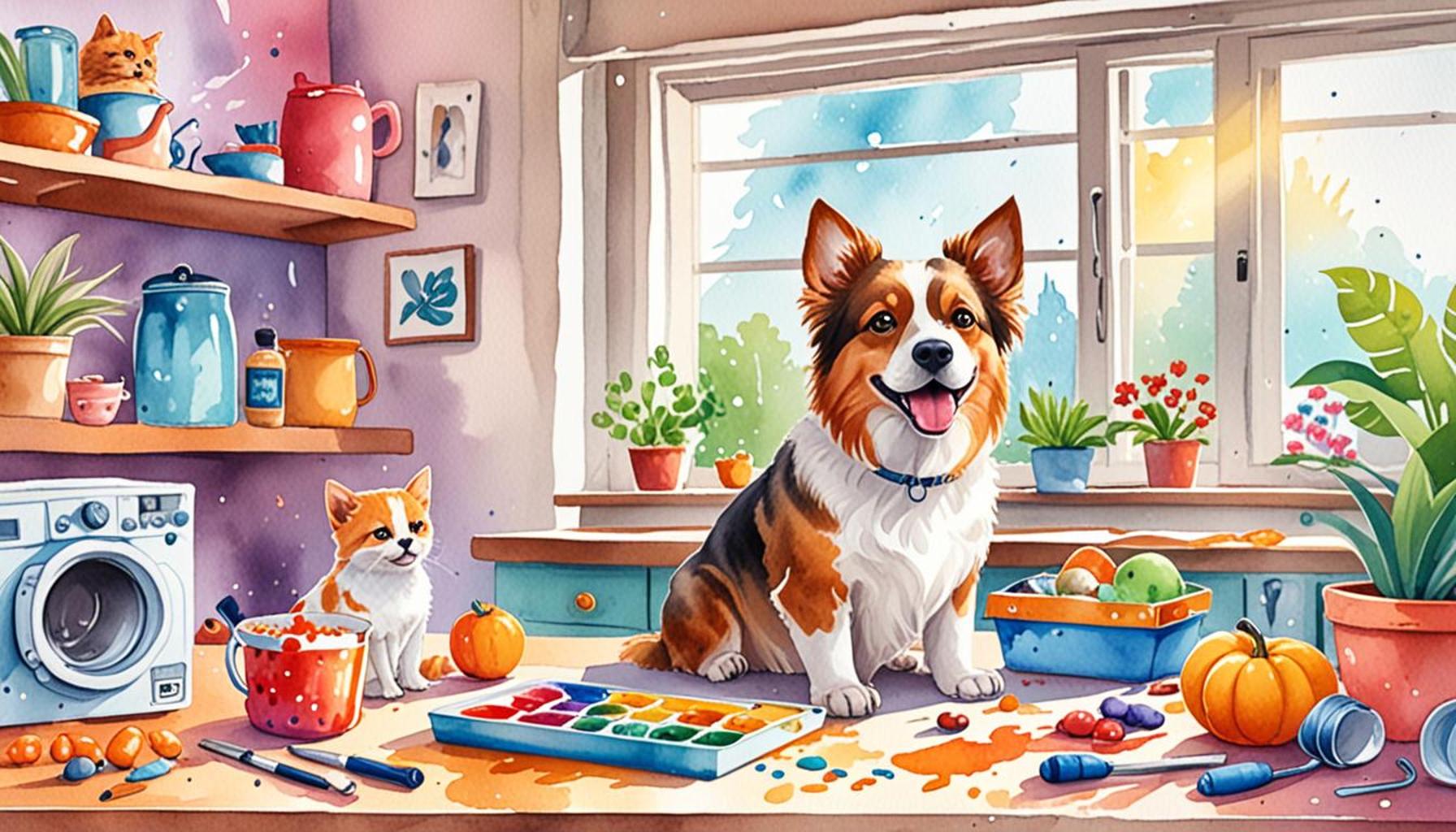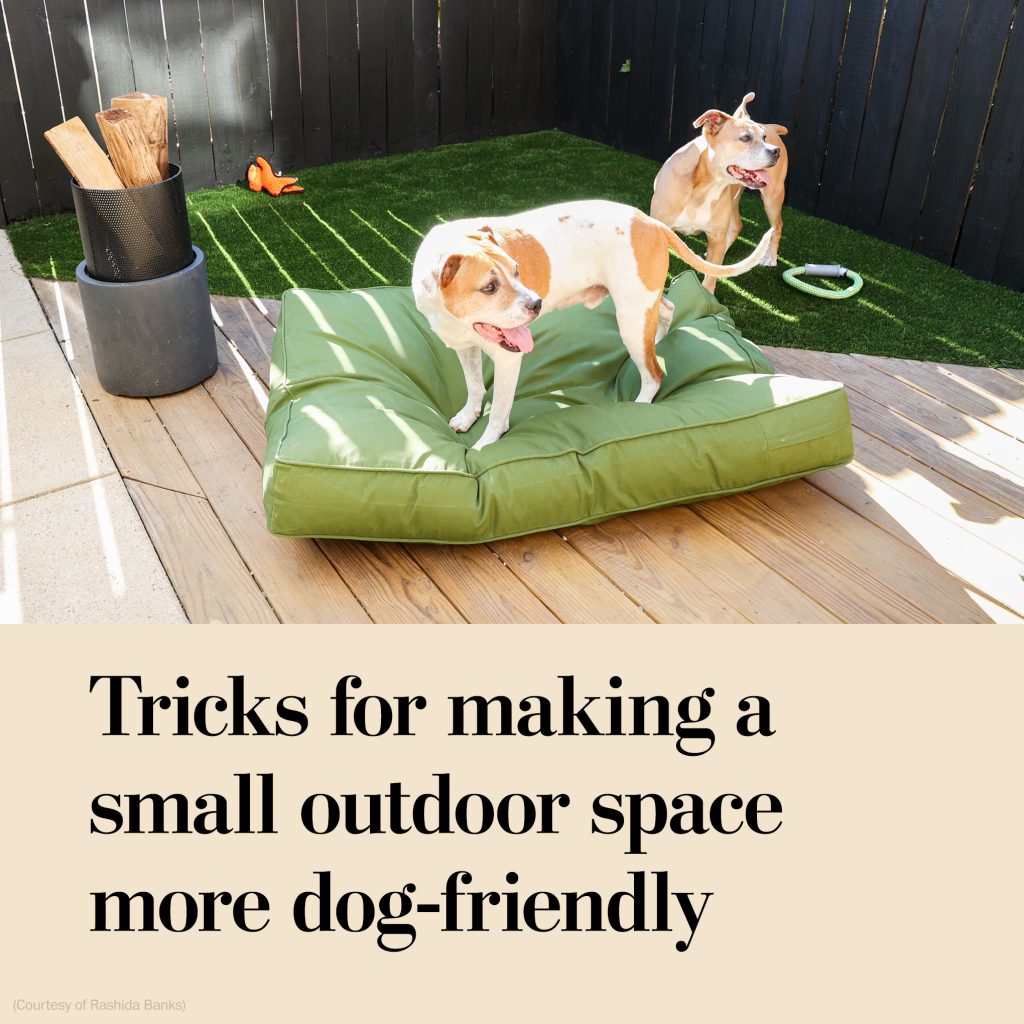How to Create a Safe and Stimulating Environment for Pets

Every pet owner desires to provide the best possible life for their furry companions. Creating a safe and stimulating environment is crucial for ensuring their physical well-being and mental health. By taking a few strategic steps, you can transform your home into a haven for both play and rest.
Key Considerations for Pet Safety
Understanding the specific needs of your pet is essential. The environment you create will significantly impact their overall health and happiness. Here are some critical aspects to consider:
- Secure Spaces: Use pet gates to restrict access to high-traffic areas. For instance, setting up gates at the stairs can prevent your pet from accidentally falling or getting hurt while trying to navigate steep steps.
- Potential Hazards: Remove toxic plants, wires, and small objects within reach. Certain common household plants such as lilies, philodendrons, and poinsettias can be poisonous to cats and dogs, so it’s wise to research pet-friendly alternatives. Additionally, securing electrical cords with cord concealers or arranging them out of reach will help prevent chewing and potential electrical hazards.
- Comfort Zones: Provide cozy bedding and quiet areas for relaxation. Designate a corner of your home where your pet can retreat when feeling overwhelmed. This space could include a plush bed, their favorite toys, and even a blanket that carries your scent to enhance their sense of security.
Stimulating Activities
Engagement is equally important for a pet’s overall happiness. Just like humans, pets require mental stimulation to thrive and express their natural behaviors. Incorporate various activities to keep their minds sharp:
- Interactive Toys: Use puzzle feeders to challenge their problem-solving skills. These toys require pets to work for their food, which helps promote mental alertness and can reduce boredom, especially in energetic dogs.
- Regular Exercise: Schedule daily walks or play sessions to maintain physical health. Depending on the breed, varying exercise routines can be beneficial. For example, high-energy breeds like Border Collies may require longer walks or runs, while smaller breeds could be content with shorter strolls followed by playtime indoors.
- Socialization: Arrange playdates or trips to dog parks for social interaction. Socialization is crucial for developing good behavior in pets. Interacting with other animals helps them learn social cues and can mitigate anxiety during encounters with unfamiliar situations or beings.
By thoughtfully creating an environment tailored to your pet’s unique needs, you can ensure they thrive in a secure and stimulating space. This approach not only benefits your pet but also fosters a deeper bond between you and your furry friend. Understanding how to provide both safety and stimulation is essential in pet care and leads to a healthier, happier companion in your home.
LEARN MORE: Click here to discover natural options for your pet’s nutrition

Create a Safe Environment for Your Pets
When it comes to pet ownership, safety is the cornerstone of a nurturing home. Pets are curious creatures, often exploring their surroundings with eagerness, which sometimes leads them to hazardous situations. Therefore, assessing your living space to ensure that it is free from potential dangers is paramount. Here are some essential elements to incorporate into your safety plan:
- Room-by-Room Assessment: Take time to inspect each area of your home, identifying any potential risks. Check that windows and screens are secure, especially in homes on upper floors. Ensuring that cleaning supplies, medications, and other toxic substances are stored in cabinets that pets cannot access can prevent accidental ingestion.
- Proper Containment: Use crates and carriers to provide safe travel options for your pets. Whether visiting the vet or going on a family trip, having a secure and comfortable space for your pet is crucial. This not only protects them during travel but also helps them acclimate to different settings.
- Mind Your Flooring: The type of flooring in your home can impact your pet’s safety. Non-slip mats or carpets can prevent slip-and-fall accidents, especially for older pets. Additionally, consider providing obstacle-free zones where pets can play without the risk of injury from sharp corners or fragile items.
Fostering Mental Stimulation
Beyond safety, enhancing your pet’s mental well-being is vital for a happy and healthy life. Pets, particularly dogs and cats, need regular engagement to prevent boredom-induced behavior problems. Incorporating stimulating activities into their daily routines can lead to a more satisfied pet. Here are some creative ways to keep your furry friends entertained:
- Training Sessions: Regular training or obedience classes not only teach essential commands but also stimulate your pet’s mind. Training sessions can be short and simple, focusing on tricks or commands that pique your pet’s interest and reinforce your bond.
- Enrichment Activities: Consider DIY enrichment options, like scavenger hunts with treats hidden around your home or sensory boxes filled with various textures and toys. Such activities engage your pet’s natural instincts and prevent boredom.
- Variety in Play: Rotate your pet’s toys to maintain their interest. Introducing new toys or varying the types of play—such as fetch, tug-of-war, or hide-and-seek—can keep your pet excited and active. Furthermore, consider joining a classes focusing on agility training or canine sports, which not only provide exercise but also challenge them mentally.
Creating a safe and stimulating environment for your pets is not just about the physical space; it’s about cultivating an atmosphere where they can thrive. By accounting for their safety and engaging them through stimulating activities, you can nurture their instincts and promote overall well-being. Investing time and effort into your pet’s environment fosters mutual love and understanding, making your home a happier place for both you and your furry friends.
Creating a safe and stimulating environment for pets is essential for their well-being and happiness. Pets, whether dogs, cats, or other animals, thrive in spaces that cater to their needs both physically and mentally. Understanding how to provide such an environment can significantly contribute to their overall health.One critical aspect is to ensure that the space is secure and free from hazards. This includes removing toxic plants, keeping dangerous chemicals out of reach, and ensuring that there are no sharp objects or choking hazards. Additionally, ensuring that windows and balcony doors are secure can prevent unexpected escapes. Moreover, environmental enrichment is vital. This involves incorporating elements that encourage natural behaviors such as climbing, scratching, or digging. For example, cat trees provide an outlet for climbing and play, while interactive toys can keep dogs engaged and mentally stimulated. Social interaction also plays a huge role in creating a stimulating environment. Pets are social creatures and benefit from regular interaction with their owners and other animals. Scheduling playtime, providing companionship, or even considering a second pet can greatly enhance their quality of life.In all these areas, understanding your pet’s specific needs and preferences will lead to a better-maintained environment that keeps them both safe and engaged. Investing time in creating and maintaining a suitable space will yield long-term benefits, showcasing the importance of a well-thought-out pet environment.To further illustrate these concepts, consider the following table outlining key advantages of an enriched living space for pets:
| Category 1 | Category 2 |
|---|---|
| Safety | Removes hazards and promotes a secure environment |
| Mental Stimulation | Interactive toys and play encourage natural behaviors |
| Social Interaction | Regular interaction fosters companionship and happiness |
With these strategies in place, pet owners can significantly enhance the quality of life for their furry companions, ensuring that they feel secure and engaged in their home environment.
DISCOVER MORE: Click here for healthy alternatives
Social Engagement and Environmental Enrichment
Alongside safety and mental stimulation, fostering social interactions and environmental enrichment is essential in creating a well-rounded space for your pets. Socialization is not only crucial for dogs but also for cats, who benefit greatly from positive interactions with other animals and humans. A well-socialized pet is generally more confident, friendly, and less prone to anxiety or aggressive behaviors. Here are some effective strategies to promote social engagement among pets:
- Playdates and Group Socialization: Setting up playdates with other pets can be an excellent way to introduce your pet to new friends and environments. For dogs, dog parks or supervised group classes offer opportunities to interact safely. For cats, consider cat cafes or cat-only areas where they can mingle without feeling threatened.
- Family Involvement: Encourage all family members to interact with the pets regularly. This can include simple activities like grooming, playing, or training. Pets thrive on routine and consistency, so establishing a shared schedule for playtime can deepen relationships and enhance their social skills.
- Exposing to New Experiences: Regular exposure to various activities helps develop a well-rounded pet. Invite them on family outings, or take walks in different environments, such as parks, neighborhoods, or hiking trails. Each new setting provides sensory stimulation, which can reduce anxiety and enhance adaptability.
Designing an Enriching Living Space
The physical environment plays a pivotal role in ensuring your pets are both safe and stimulated. Making adjustments that cater to your pet’s behavioral needs is immensely beneficial. Consider these practical adjustments for fostering a lively yet secure atmosphere:
- Create Vertical Spaces: Cats, in particular, love to climb and explore from high points. Providing cat trees, shelves, or window perches can encourage natural behaviors and allow for safe observation of their surroundings. Dogs enjoy exploring too—consider pet-friendly furniture that allows them to see the outdoors or different areas of your home.
- Interactive Feeders and Puzzle Toys: Switching from standard food bowls to interactive feeders or puzzle toys can turn mealtime into a captivating activity. This not only keeps pets mentally stimulated but also encourages slower eating habits, which helps with digestion. Look for options specific to your pet’s size and skill level.
- Natural Elements: Incorporating elements like plants, pathways, and water features into your yard or indoor environment can enhance thermal interests. Ensure that any plants are pet-safe—many common household plants can be toxic. Engaging them with safe, natural stimulants positively impacts their physical and emotional state.
A safe and stimulating environment isn’t merely a goal, but an ongoing journey in pet ownership. By keenly observing your pets’ interactions with their surroundings, you can continuously adapt their spaces to ensure a thriving, engaging experience. As environments evolve, so should your strategies, offering both new challenges and comforts fit for every unique personality.
DISCOVER MORE: Click here for effective training techniques
Conclusion
Creating a safe and stimulating environment for your pets is integral to their overall well-being and happiness. It goes beyond simply providing shelter and food; it involves crafting a space that encourages both physical activity and mental engagement. As we’ve explored, incorporating elements such as socialization opportunities, interactive play, and enriching environments can significantly enhance your pet’s quality of life. Promoting interactions with both humans and other animals helps develop essential social skills and reduces behavioral issues, allowing your pets to thrive in a diverse atmosphere.
Additionally, adapting your living space—through vertical structures for climbing, engaging feeding solutions, and enriching natural surroundings—can turn everyday routines into exciting adventures. The importance of continued observation and adaptation cannot be overstated. Each pet is unique, with different needs and preferences, so being attuned to these will enable you to provide the best possible environment.
In conclusion, remember that a thriving pet is a reflection of a well-designed living space. Investing time and effort into creating an engaging, safe habitat not only nurtures your pet’s physical health but also fosters emotional stability and joy. Stay informed, explore new ideas, and keep evolving your approach to your pet’s environment. Through dedicated commitment, you will not only enrich their lives but also deepen the bond you share. With well thought-out strategies, you’re paving the way for a lifetime of adventures with your furry companions.



